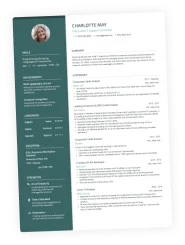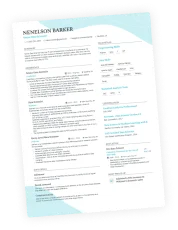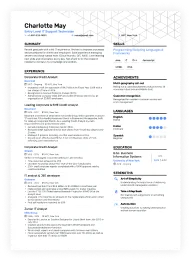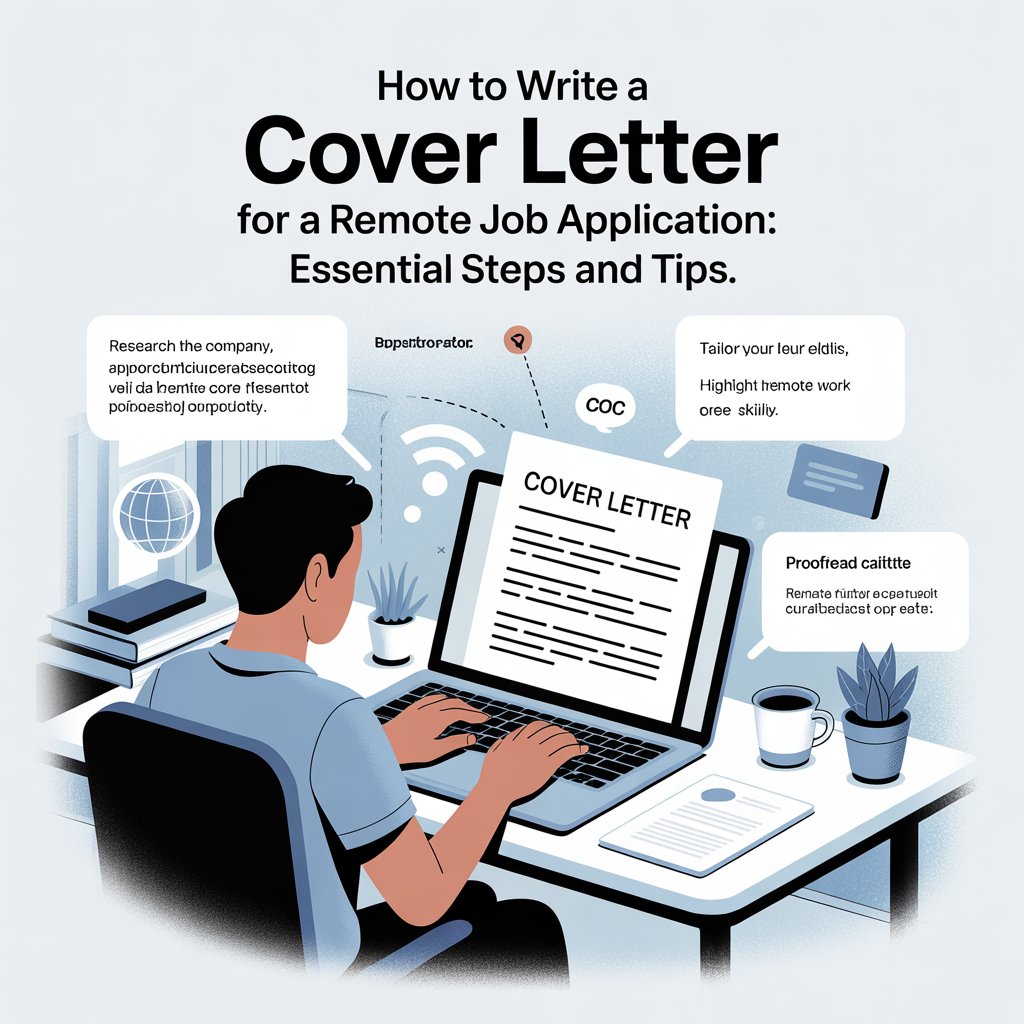Writing a compelling cover letter introduction is key to grabbing the attention of hiring managers. It’s your chance to set the stage for the rest of your letter and make a strong first impression. A powerful cover letter introduction not only introduces who you are but also highlights your enthusiasm for the position and the organization. In this article, we’ll explore how to craft an introduction that stands out and effectively communicates your qualifications.
Key Takeaways
- A strong introduction is essential for making a good first impression.
- Personalize your greeting to show genuine interest in the position.
- Start with an engaging hook to capture the reader’s attention.
- Be clear about your intent and why you’re interested in the job.
- Tailor your language and qualifications to match the job description.
Understanding The Purpose Of A Powerful Cover Letter Introduction
Why The Introduction Matters
The introduction is your reader’s first impression, and you want to make it count. It’s more than just a formality; it’s your chance to grab their attention and set the stage for why they should consider you. Think of it as the opening scene of a movie – it needs to be compelling enough to make them want to keep watching. A weak introduction can lead to your application being overlooked, regardless of how qualified you are. It’s about making a connection right from the start. A well-crafted introduction can significantly increase your chances of landing an interview. It shows you understand the role and the company, and that you’re genuinely interested. It’s your opportunity to showcase your enthusiasm and professionalism.
Setting The Tone For Your Letter
The introduction sets the tone for the entire cover letter. It should be professional, confident, and tailored to the specific company and position. A generic, uninspired introduction can suggest a lack of effort or genuine interest. The tone should reflect your personality while maintaining a level of formality appropriate for the industry. It’s about finding the right balance between being personable and professional. A well-crafted tone can convey your enthusiasm and make the reader more receptive to your qualifications. It’s also important to consider the company culture when setting the tone. A more formal company may require a more traditional approach, while a startup might appreciate a more creative and energetic tone. Consider these points:
- Reflect your personality.
- Maintain professionalism.
- Consider company culture.
Creating A Lasting First Impression
Your introduction is your opportunity to make a positive first impression. It’s the first thing the hiring manager will read, and it can significantly influence their perception of you. A strong introduction can make you stand out from other candidates and increase your chances of getting an interview. It’s about showcasing your unique value proposition and demonstrating why you’re the right fit for the role. A memorable introduction can leave a lasting impression and make you more memorable to the hiring manager. It’s also important to be authentic and genuine in your introduction. Don’t try to be someone you’re not, as this can come across as insincere. Instead, focus on highlighting your strengths and experiences in a way that is true to yourself. Expressing genuine enthusiasm is key.
Crafting A Personalized Greeting
Addressing The Right Person
It’s always better to address your cover letter to a specific person. Doing a little digging to find the hiring manager’s name shows you’re proactive and serious about the job. Check the job posting, the company website, or even LinkedIn. If you can’t find a name, “Dear Hiring Manager” is a safe bet. Using a name makes your application stand out from the pile of generic submissions.
Using Professional Titles
When you know the person’s name, use the correct professional title. “Mr.” or “Ms.” are generally safe, but if you know they have a doctorate or other professional designation (like Dr. or Professor), use it. It shows respect and attention to detail. If you’re unsure of their gender, you can use their full name (e.g., Dear Alex Johnson) to avoid making assumptions. This is a small thing that can make a big difference. formal salutations are key to a good first impression.
Avoiding Generic Greetings
Steer clear of generic greetings like “To Whom It May Concern.” It’s impersonal and suggests you didn’t put in the effort to learn about the company or the hiring manager. It’s like sending a mass email – it doesn’t feel special. Instead, aim for a personalized greeting that shows you’ve done your homework. If you absolutely can’t find a name, “Dear Hiring Manager” is acceptable, but always try to find a specific person first. Addressing the hiring manager directly is always the best approach.
A personalized greeting sets the tone for your entire cover letter. It shows you’re not just sending out a generic application, but that you’re genuinely interested in this specific opportunity and have taken the time to learn about the company and the people who work there.
Here’s a quick guide:
- Best: Dear Mr./Ms./Dr. [Last Name]
- Good: Dear Hiring Manager
- Avoid: To Whom It May Concern, Hello, Hi
Opening With A Strong Hook
Techniques To Capture Attention
To make your cover letter stand out, you need to grab the reader’s attention right away. A strong hook isn’t just about being flashy; it’s about showing you understand the company and the role. Think of it as your opening statement in a case you’re trying to win. Instead of starting with a generic “I’m applying for…”, try something that shows you’ve done your research and you’re genuinely interested. For example, if the company recently achieved something significant, you could mention that and tie it to your skills. Or, if you know their values, you could start by highlighting how your own values align with theirs. This shows you’re not just sending out a template; you’re making a real effort to connect. Remember, the goal is to make them want to keep reading.
Using Anecdotes Effectively
An anecdote, or a short, relevant story, can be a powerful way to start your cover letter. It’s a chance to show, not just tell, what you’re capable of. The key is to keep it brief and directly related to the job requirements. For instance, if you’re applying for a project management role, you might start with a quick story about a time you successfully managed a challenging project. The anecdote should highlight specific skills and results, and it should naturally lead into why you’re a good fit for the position. Avoid rambling or including unnecessary details. The goal is to create a memorable and engaging opening that showcases your abilities in a relatable way. Make sure the cover letter emphasizes your key achievements.
Highlighting Your Unique Value
What makes you different from other candidates? This is what you need to highlight right from the start. Don’t just list your skills; show how those skills translate into value for the company. Think about the specific challenges the company is facing and how you can help solve them. For example, if the job description mentions a need for someone with strong analytical skills, you could start by mentioning a time you used data analysis to solve a problem and achieve a significant result. The point is to immediately demonstrate that you’re not just another applicant; you’re someone who can bring something special to the table. A compelling introduction captures attention and emphasizes your unique qualifications.
Starting with a strong hook is essential. It sets the tone for the rest of your cover letter and makes the reader want to learn more about you. Make sure it’s relevant, engaging, and showcases your unique value proposition.
Stating Your Intent Clearly
Expressing Your Interest In The Position
It’s important to be direct. Don’t beat around the bush; state clearly why you are writing. This section is where you explicitly express your interest in the specific position. Make it obvious to the reader that you’re not just sending out generic applications. A strong opening might look like this: “I am writing to express my keen interest in the Marketing Manager position at Innovate Solutions, as advertised on LinkedIn.”
Mentioning How You Found The Job
Let the reader know where you saw the job posting. This adds context and can sometimes create a connection. Did you see it on the company website, a job board, or were you referred by someone? Mentioning the source shows you’ve done your homework. For example, “I learned about the opening for a Software Engineer on Indeed and was immediately drawn to the opportunity.”
Connecting With The Company’s Mission
Show that you understand and appreciate what the company stands for. How does their mission align with your values and career goals? This demonstrates that you’re not just looking for any job, but a place where you can truly contribute. For instance, if a company values sustainability, you might say, “Having followed GreenTech Innovations’ commitment to environmental responsibility, I am eager to contribute my skills to your team.”
Connecting with the company’s mission shows you’re not just looking for a paycheck. It shows you’re invested in their goals and values. This can make a big difference in how your application is perceived.
Here’s a quick list of things to consider:
- Clearly state the position you’re applying for.
- Mention where you found the job posting.
- Connect your values with the company’s mission.
- Keep it concise and to the point.
By clearly stating your intent, you set the stage for the rest of your cover letter and show the reader that you’re a serious and thoughtful candidate. Remember to tailor this section to each specific job application to make it more impactful. You can find cover letter examples online to help you get started. The introduction is a key part of the cover letter sections.
Showcasing Relevant Qualifications
This section is all about proving you’re not just interested in the job, but actually capable of doing it well. It’s where you connect your past experiences to the needs of the role. Think of it as showing, not just telling, why you’re a great fit.
Briefly Highlighting Your Skills
Don’t just list skills; weave them into a narrative. Instead of saying “Proficient in data analysis,” try something like, “In my previous role, I used data analysis to identify key trends, resulting in a 15% increase in efficiency.” It’s about demonstrating the impact of your skills. Focus on the skills that are most relevant to the job description.
Aligning Your Experience With The Job
This is where you draw direct lines between what you’ve done and what they need. Read the job description carefully. What are the key responsibilities? What skills are they looking for? Then, think about your own experience and identify examples that demonstrate those skills. For example, if they need someone with project management experience, talk about a time you successfully managed a project, highlighting the challenges you faced and how you overcame them. It’s about making it easy for the reader to see you in the role. You can find an international career development opportunity to gain more experience.
Using Metrics To Demonstrate Success
Numbers speak louder than words. Whenever possible, quantify your achievements. Did you increase sales? By how much? Did you reduce costs? By what percentage? Metrics provide concrete evidence of your abilities and make your accomplishments more impactful. Consider this example:
| Achievement | Metric |
|---|---|
| Increased Sales | 20% in Q2 |
| Reduced Project Costs | 15% year-over-year |
| Improved Efficiency | 10% across teams |
Remember, the goal is to make a strong case for why you’re the best candidate. Use specific examples, quantify your achievements, and show how your skills and experience align with the needs of the job. Don’t just repeat your resume; expand on it and provide context. Make sure to detail relevant experience in your cover letter.
Incorporating Industry-Specific Language
It’s not just about what you say, but how you say it. Using the right language can show you’re not just generally competent, but specifically suited for the role and the industry. It shows you speak their language, understand their challenges, and are ready to contribute meaningfully from day one.
Using Keywords From The Job Description
Job descriptions are goldmines. They tell you exactly what the company values and the skills they’re actively seeking. Sprinkling these keywords naturally throughout your cover letter shows you’ve paid attention and understand their needs. Don’t just stuff them in randomly; weave them into your sentences to demonstrate how you meet each requirement. For example, if a job description for a marketing role mentions “SEO optimization,” you might write, “My experience in SEO optimization keywords in a cover letter has allowed me to increase organic traffic by 30% in six months.”
Demonstrating Knowledge Of The Field
Beyond the specific keywords in the job description, show you understand the broader industry landscape. This could involve mentioning current trends, challenges, or opportunities relevant to the company. It shows you’re not just looking for any job, but that you’re genuinely interested in this particular field. For instance, if you’re applying for a position in the renewable energy sector, you might reference recent advancements in solar panel technology or policy changes affecting the industry.
Tailoring Language To The Company Culture
Every company has its own unique culture and communication style. Research the company’s website, social media, and employee reviews to get a sense of their tone. Are they formal and traditional, or more casual and innovative? Tailor your language to match. If the company uses a lot of jargon or technical terms, don’t be afraid to incorporate them into your cover letter, but only if you genuinely understand them. For example, if you’re applying for an industrial design position, you should include keywords from the job description to align your skills with the employer’s needs.
Using industry-specific language isn’t about sounding smart; it’s about showing you’re a good fit for the company and the role. It demonstrates that you’ve done your homework and are ready to contribute meaningfully from day one.
Here’s a quick checklist:
- Identify key terms from the job description.
- Research industry trends and challenges.
- Understand the company’s culture and communication style.
- Use language that is both accurate and appropriate.
Establishing A Connection With The Reader
It’s not just about listing your skills; it’s about showing you’ve done your homework and care about the company. Making a connection, even a small one, can significantly boost your chances. It shows you’re not just sending out generic applications.
Referencing Mutual Contacts
If you know someone who works at the company, mentioning them can be a great way to start. It instantly gives you some credibility. Just make sure you’ve actually spoken with the person and they’re okay with you using their name. It’s a small world, and people appreciate a genuine connection. For example, you could say, “I was excited to see the opening for this role, especially after speaking with [Mutual Contact’s Name] about their positive experiences at [Company Name].”
Mentioning Previous Interactions
Have you met someone from the company at a career fair or information session? Bring it up! It shows you’re proactive and interested. It also helps the reader remember you. It’s all about building rapport. If you had a conversation with a recruiter, mentioning a specific point you discussed can make your application stand out. This shows you were engaged and thoughtful during the interaction. It’s a simple way to address a cover letter directly.
Expressing Genuine Enthusiasm
Don’t be afraid to show your excitement for the role and the company. Enthusiasm is contagious! But keep it professional. Over-the-top gushing can come across as insincere. Instead, focus on what specifically excites you about the opportunity. Maybe it’s the company’s mission, a particular project, or the chance to work with a specific team. Authenticity is key here. Let your passion shine through, but keep it grounded in reality. This is a great way to emphasize the qualifications that make you a good fit.
Keeping It Concise And Focused
Avoiding Unnecessary Details
Your cover letter introduction isn’t the place for your life story. It’s more like a movie trailer – you want to give them the highlights and make them want to see more. Cut out anything that doesn’t directly relate to the job or showcase why you’re a good fit. Think of it as a first impression; you want to be memorable, not overwhelming. For example, instead of detailing every job you’ve ever had, focus on the one or two experiences that directly align with the position’s requirements. This shows you understand what’s important and respects the reader’s time. A general purpose cover letter should be tailored to the specific job.
Staying On Topic
It’s easy to get sidetracked, especially if you’re excited about the opportunity. However, your introduction should have a clear and singular focus: why you’re the right person for this specific job. Avoid tangents about unrelated skills, past projects that don’t align, or personal anecdotes that don’t serve a purpose. Each sentence should contribute to your core message. If it doesn’t, cut it. This laser focus will make your introduction more impactful and easier to read.
Using Clear And Direct Language
Avoid flowery language or overly complex sentences. The goal is to communicate your interest and qualifications clearly and directly. Use strong action verbs and straightforward phrasing. For instance, instead of saying “I possess a strong ability to…”, say “I can…” Clarity builds confidence and shows you’re a professional who values effective communication. When writing a short cover letter, every word counts, so make them impactful.
Think of your introduction as an elevator pitch. You have a limited amount of time to grab their attention and convince them you’re worth learning more about. Make every word count by being clear, concise, and focused on what you bring to the table.
Editing And Refining Your Introduction
Reviewing For Clarity And Impact
Okay, so you’ve got your introduction written. Now what? Time to put on your editor hat! The first thing you need to do is read it over, carefully, and ask yourself: is this clear? Does it immediately grab the reader’s attention, or does it kind of just…sit there? You want every word to count. Think about the impact each sentence has. Are you making a strong first impression, or are you just filling space? Cut out anything that doesn’t add value. Make sure your strongest points are front and center. This is where you really polish things up and make sure your introduction shines. It’s like giving your car a final wax before a big show – you want it to look its absolute best. Remember, this is your chance to hook the hiring manager, so make it count. A well-crafted introduction can significantly improve your cover letter’s effectiveness.
Seeking Feedback From Peers
Alright, you’ve tweaked and adjusted your introduction until you can’t look at it anymore. Now, get a fresh pair of eyes on it. Ask a friend, a colleague, or even a family member to read it over. Tell them to be brutally honest. You’re not looking for compliments; you’re looking for constructive criticism. Do they understand what you’re trying to say? Does it sound natural, or does it sound forced? Sometimes, we’re too close to our own writing to see the flaws. Other people can spot awkward phrasing or unclear sentences that we might miss. Getting feedback is like having someone check your blind spot while you’re driving – it can save you from a potential disaster. Plus, they might have some great ideas that you hadn’t even considered. It’s all about making your introduction the best it can be. Consider asking someone with experience in editing cover letters for the best results.
Making Sure It Flows Well With The Rest Of The Letter
Your introduction can’t exist in a vacuum. It needs to flow seamlessly into the body of your cover letter. Think of it as the opening scene of a movie – it sets the stage for everything that follows. Does your introduction logically lead into your skills and experience? Does it create a sense of anticipation for what’s to come? If there’s a disconnect between your introduction and the rest of your letter, it’s going to throw the reader off. You want them to feel like they’re on a smooth, well-paved road, not a bumpy, unpaved one. So, read your entire cover letter from start to finish and pay attention to how the introduction connects to the rest of the content. If necessary, adjust your introduction or your body paragraphs to create a more cohesive and compelling narrative. This ensures your editorial cover letter is consistent and engaging.
Editing your cover letter introduction is not just about fixing typos or grammar mistakes. It’s about making sure your introduction is clear, impactful, and aligned with the rest of your letter. It’s about making a strong first impression and setting the stage for a successful job application.
Here’s a quick checklist to consider:
- Is the purpose of the letter immediately clear?
- Does the introduction highlight your most relevant skills?
- Does it sound enthusiastic and professional?
Examples Of Effective Cover Letter Introductions
Analyzing Successful Samples
Let’s look at some cover letter introductions that really work. It’s not just about saying you’re interested; it’s about showing why you’re the right fit. A strong intro grabs attention and makes the reader want to learn more. Think of it as your first impression – make it count!
Learning From Real-World Scenarios
Consider this: you’re applying for a marketing position at a tech startup. A generic intro won’t cut it. Instead, try something like:
“Having followed [Company Name]’s innovative campaigns on social media, particularly [mention a specific campaign], I was excited to see the opening for a Marketing Specialist. My experience in [relevant skill 1] and [relevant skill 2] aligns perfectly with your focus on [company value].”
See how that’s way more specific and engaging? It shows you’ve done your homework and aren’t just sending out a mass email. You can also mention previous interactions with the company.
Here’s another example, this time for a non-profit role:
“Inspired by [Organization Name]’s commitment to [cause], as demonstrated by [specific project], I am eager to contribute my skills in [relevant skill] to your team. My background in [related experience] has equipped me with the ability to [achieve specific outcome].”
Identifying Key Elements In Examples
So, what makes these examples effective? Here are a few key elements:
- Specificity: They mention the company by name and reference specific projects or values.
- Relevance: They highlight skills and experience that directly align with the job description.
- Enthusiasm: They express genuine interest in the company and the role.
To make your introduction stand out, you need to do your research. Understand what the company values and what they’re looking for in a candidate. Then, tailor your introduction to show them why you’re the perfect fit. You want to demonstrate knowledge about the company.
Here’s a table summarizing the key elements:
| Element | Description |
|---|---|
| Specificity | Mention company name, projects, values |
| Relevance | Align skills and experience with job description |
| Enthusiasm | Express genuine interest |
Common Mistakes To Avoid In Your Introduction
Overly Generic Openings
Starting your cover letter with a bland, uninspired sentence is a surefire way to lose the reader’s attention immediately. Avoid phrases like “I am writing to apply for…” or “I am interested in the position…” These are obvious and don’t showcase any enthusiasm or unique value. Instead, aim for something that grabs their attention and sets you apart from other applicants. Think about it: recruiters read hundreds of these things. You want yours to stand out, not blend in.
Neglecting To Personalize
In today’s job market, a generic cover letter is a major red flag. It shows a lack of effort and genuine interest in the specific company and role. Always research the company and tailor your introduction to reflect your understanding of their values, mission, and current projects. A personalized approach demonstrates that you’ve taken the time to learn about the organization and are genuinely excited about the opportunity. You can also address the right person to show you’ve done your research.
Failing To State Your Purpose
While it’s important to be creative and engaging, don’t forget to clearly state the purpose of your letter. The reader should immediately understand which position you are applying for and why you are a strong candidate. Avoid being vague or beating around the bush. Get straight to the point and make it easy for the recruiter to see the connection between your skills and the job requirements. It’s also important to emphasize how your skills can benefit the employer.
A strong cover letter introduction should be concise, personalized, and purpose-driven. It should immediately capture the reader’s attention and clearly communicate your interest in the position and your qualifications. Avoiding these common mistakes will significantly increase your chances of making a positive first impression.
Final Tips For A Powerful Cover Letter Introduction
Revisiting Your Research
Before you finalize that introduction, take another look at your research. Did you really dig into the company’s values? Did you understand the role’s requirements? Make sure your introduction reflects a genuine understanding of what the company is looking for. It’s not just about showing you’re qualified; it’s about showing you get them. Use the job description to guide you.
Practicing Your Delivery
Even though it’s written, your introduction should sound natural. Read it aloud. Does it flow? Does it sound like you? If possible, record yourself reading it and listen back. You might catch awkward phrasing or areas where you can summarize your qualifications more effectively. A polished delivery can make a big difference.
Staying Authentic To Your Voice
It’s easy to fall into the trap of using overly formal or generic language. But the best introductions are the ones that let your personality shine through. Don’t be afraid to show your enthusiasm and let your unique voice come through. Authenticity is key to making a lasting impression.
Remember, your cover letter introduction is your first chance to make a connection. Be genuine, be clear, and be yourself. Let your passion for the role and the company shine through, and you’ll be well on your way to landing that interview.
When you write your cover letter, start with a strong opening that grabs attention. Make sure to mention the job you want and why you’re excited about it. This sets a positive tone and shows your enthusiasm. For more tips on crafting the perfect cover letter, visit our website and get started today!
Wrapping It Up
In conclusion, crafting a strong introduction for your cover letter is key to making a good first impression. Start with a personal greeting and clearly state who you are and why you’re reaching out. Make it specific to the job and company, and don’t shy away from mentioning any connections you have. Remember, your goal is to grab the reader’s attention right away. Take your time to refine this part, as it sets the tone for the rest of your letter. With a little effort, you can create an introduction that stands out and gets you noticed.
Frequently Asked Questions
What is the main goal of a cover letter introduction?
The introduction of your cover letter should grab the reader’s attention and explain who you are and why you’re applying for the job.
How should I start my cover letter introduction?
Begin with a greeting to a specific person, then introduce yourself and state the job you are applying for.
Why is it important to personalize my greeting?
Addressing your letter to a specific person shows that you have done your research and are genuinely interested in the position.
What is a strong hook in a cover letter?
A strong hook is a sentence that captures the reader’s interest right away. It can be an interesting fact about yourself or a connection to the company.
How can I show my enthusiasm for the job?
You can express your excitement by mentioning why the job appeals to you and how it aligns with your career goals.
What should I include about my qualifications in the introduction?
Briefly highlight your relevant skills and experiences that make you a good fit for the job.
How important is it to use industry-specific language?
Using language that fits the industry shows that you understand the field and can communicate effectively within it.
What common mistakes should I avoid in my introduction?
Avoid generic openings, failing to personalize your letter, and not clearly stating your purpose for writing.












